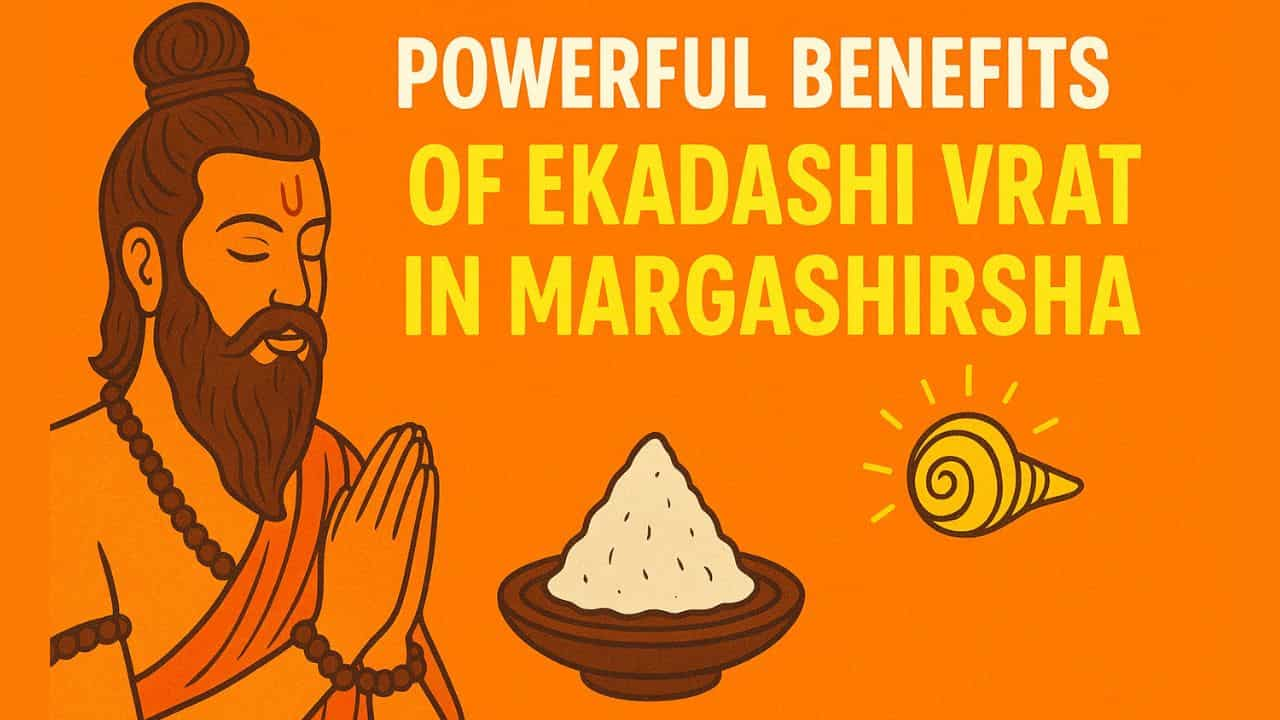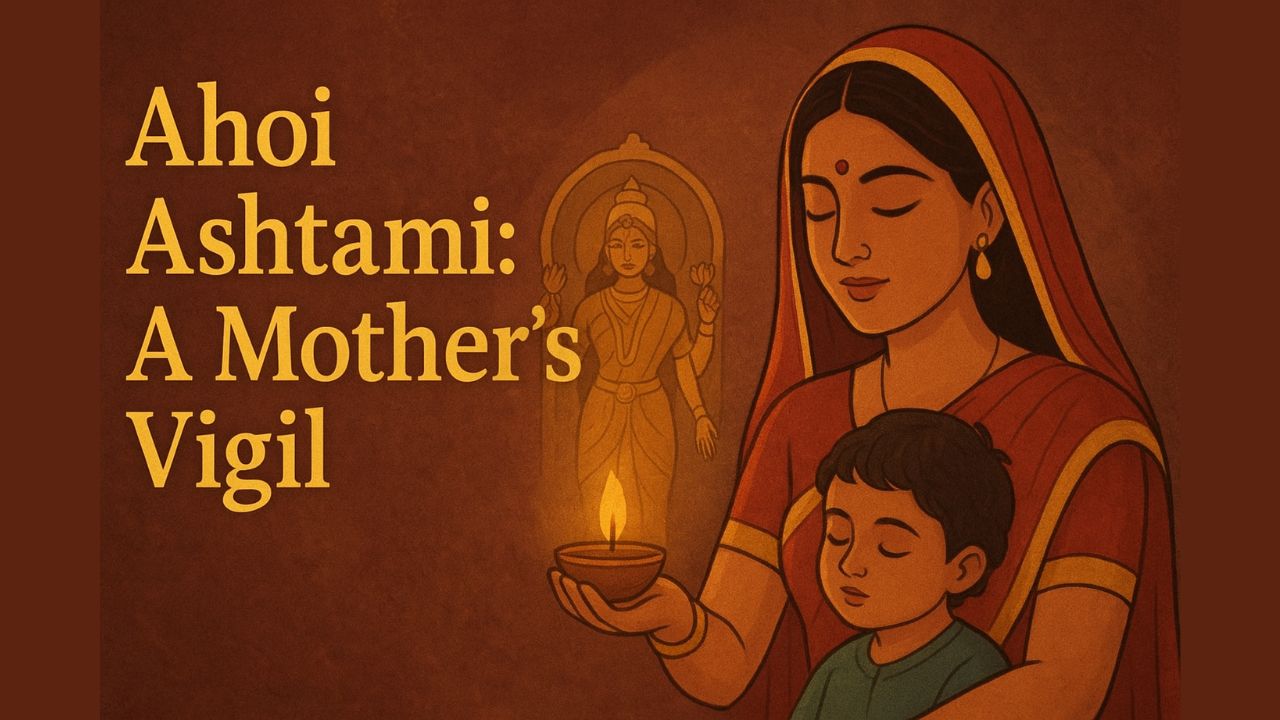Ekadashi Vrat

In the Hindu lunar calendar, Ekadashi holds a sacred place as the 11th day of both the waxing and waning moon cycles. This means every month has two Ekadashis, each dedicated to Lord Vishnu.
It is believed that observing fast on Ekadashi cleanses the body, purifies the mind, and brings one closer to the divine. While all Ekadashis are important, those that fall in the month of Margashirsha (November-December) carry a unique spiritual charm.
Margashirsha, also known as Agrahayana, is regarded as one of the holiest months, often praised by Lord Krishna himself in the Bhagavad Gita as the most sacred among the lunar months.
The Sacredness of Margashirsha Month
Margashirsha finds frequent mention in Hindu scriptures as a month dedicated to devotion, meditation, and gratitude.
It is the onset of winter in India, a time when the atmosphere naturally becomes serene, encouraging inner reflection and discipline.
This makes the Ekadashis falling within this period highly auspicious. They are not only considered powerful for individual spiritual progress but also believed to bless families with peace and prosperity.
The winter silence, combined with the spiritual discipline of fasting, makes the month ideal for connecting with divinity.
Types of Ekadashis in Margashirsha
There are typically four Ekadashis observed during Margashirsha, two during the waxing (Shukla Paksha) and two during the waning (Krishna Paksha) phases of the moon.
Each Ekadashi carries its own story, rituals, and promises of blessings. Some prominent ones include:
- Utpanna Ekadashi: Celebrated as the day when Ekadashi Devi, the personification of fasting, was born.
- Mokshada Ekadashi: Perhaps the most well-known in this month, observed with the belief that fasting on this day can grant liberation to one’s ancestors and ensure moksha for the soul.
- Safala Ekadashi: Considered significant for success, prosperity, and good fortune.
Together, these Ekadashis create a spiritual rhythm, guiding devotees through discipline, sacrifice, and renewal of faith.
The Story Behind Ekadashi Vrat
According to Hindu mythology, Ekadashi Devi was born from Lord Vishnu’s divine energy to defeat the demon Mur.
The demon was powerful and created obstacles for the gods. It was on the 11th lunar day that Ekadashi emerged and destroyed him, thereby establishing the sanctity of the day.
Since then, Ekadashi has been associated with the power to overcome negativity, cleanse impurities, and bring light into the hearts of devotees. The story is not just symbolic but carries deep philosophical meaning, the victory of self-control and discipline over temptation and darkness.
In many ways, Ekadashi vrat represents humanity’s constant struggle to rise above desire and align with righteousness.
Rituals and Practices of Ekadashi Vrat
The Ekadashi vrat can vary from person to person, depending on health and capacity. Some observe a complete fast without food or water, while others opt for partial fasting with fruits, milk, and water. The common practices include:
- Waking up early and taking a holy bath symbolizes purification.
- Offering prayers to Lord Vishnu, chanting mantras like “Om Namo Bhagavate Vasudevaya” or reciting the Vishnu Sahasranama.
- Avoiding grains and lentils, as they are considered tamasic (heavy) and believed to generate laziness.
- Spending time in bhajans, kirtans, or reading scriptures like the Bhagavad Gita and Vishnu Purana.
- Breaking the fast on Dwadashi (the next day) with humility and gratitude.
The focus is not only on physical abstinence but also on cultivating purity in thought and action.
Spiritual Benefits of Observing Ekadashi Vrat
The benefits of Ekadashi vrat are not only material but also profoundly spiritual.
Devotees believe it removes sins of the past, strengthens willpower, and aids in spiritual growth. In Margashirsha, these benefits are said to multiply due to the naturally pure vibrations of the season.
Spiritually, Ekadashi is like a reset button for the soul, an opportunity to pause indulgence and reorient life towards dharma and devotion. Observing it regularly is said to develop inner strength, patience, and a deep sense of gratitude.
Ekadashi Vrat in Modern Life
In today’s busy lifestyle, Ekadashi offers a unique blend of physical, mental, and emotional wellness.
Fasting, when done properly, can detoxify the body and improve digestion. The discipline of avoiding indulgence cultivates mindfulness and mental clarity. More importantly, dedicating the day to prayers and positive thoughts can help in reducing stress and anxiety.
Many modern spiritual practitioners, even those not deeply religious, adopt Ekadashi fasting as a way to balance health and spirituality. Families often see it as an opportunity to reconnect, as members pray together and share in the spirit of devotion.
Social and Cultural Dimensions of Ekadashi Vrat
Ekadashi vrat is not merely a personal vow but is often celebrated in community settings.
- Temples of Lord Vishnu and Krishna become vibrant with special decorations, devotional songs, and discourses.
- In regions like Mathura, Vrindavan, and Ujjain, Ekadashi nights witness mass gatherings where devotees sing and dance in devotion.
- Families also come together, offering prayers and sharing fruits or vrat-friendly meals, making it a festival of bonding as much as devotion.
The collective spirit enhances the sense of connection not only with the divine but also with the larger community.
Ekadashi Vrat and Liberation of Ancestors
One of the most important aspects of Margashirsha Ekadashis, especially Mokshada Ekadashi, is the belief that observing the fast helps liberate one’s ancestors from difficulties in the afterlife.
Devotees perform rituals such as donating food, clothes, or money in the name of ancestors, seeking their blessings, and ensuring their peaceful journey.
This practice reflects the deep connection in Hinduism between personal duty and collective responsibility, reminding us that our spiritual actions ripple across generations.
The Philosophical Core of Ekadashi
At its heart, Ekadashi is not just about abstaining from food. It is about abstaining from negative thoughts, harmful actions, and wasteful indulgences.
The practice serves as a reminder that self-restraint leads to freedom, and discipline brings harmony. By aligning oneself with cosmic cycles, fasting during lunar days when energies are more subtle, devotees connect with the larger rhythm of the universe. This alignment enhances inner balance and encourages the pursuit of truth.
Ekadashi Vrat: More Than a Ritual
Ekadashi in Margashirsha is more than a ritual; it is an invitation to step into a deeper relationship with oneself and the divine. It bridges the practical and the spiritual, teaching the value of discipline, self-control, and devotion.
Observing these Ekadashis allows one to experience not only the blessings of health and prosperity but also the deeper peace that comes from aligning with dharma.
As the chill of winter sets in and the atmosphere turns inward, Margashirsha Ekadashi becomes the perfect time for reflection, gratitude, and spiritual renewal. It is not just about fasting from food but about fasting from negativity, distractions, and everything that distances us from the divine essence within.

